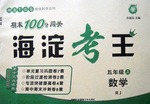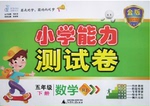题目内容
【题目】
【1】Every week he cleaned the chicken house in __________ (交换) for some pocket money.
【2】D__________ to give up smoking, he threw away his remaining cigarettes.
【3】Believe it or not, there are some words in the English language that native people may find __________ (混淆;难懂).
【4】A group of poachers were killing the _________________(濒危的) Tibetan antelope.
【5】When he retired at the age of 26, Li Ning had won 106 gold medals in major __________________(比赛) across the world.
【6】People kept on ______________(抗议) against the war in Iraq outside the conference hall.
【7】They were _____________(好奇的) to know the people living upstairs.
【8】Nowadays, China can not only feed herself but also ___________(出口) some rice to other countries.
【9】The newly-published book ______________ ____________ 20 chapters, each chapter having 20,000 words.(由…组成)
【10】Often the drivers just pass by, _____________ the human traffic signal _________ ____________.(认为……理所当然)
【答案】
【1】exchange
【2】Determined
【3】confusing
【4】endangered
【5】competitions
【6】protesting
【7】curious
【8】export
【9】consists of
【10】taking forgranted
【解析】
【1】in exchange for作为……的交换,是固定短语,所以填exchange。
【2】be determined to do sth. 属于be done 结构,作非谓语动词时,直接选择done (过去分词形式),所以填Determined。
【3】V+ed修饰人,v+ing修饰物,这里修饰some words,所以填confusing。
【4】修饰名词Tibetan antelope,用形容词,所以填endangered。
【5】当李宁在26岁退役的时候,他已经在世界上各种重要的比赛中获得106块金牌。“各种重要的比赛” 是复数意义,所以填competitions。
【6】Keep on doing继续做某事,是固定短语,所以填protesting。
【7】be动词后,用形容词作表语,所以填curious。
【8】not only … but also连接两个相同的结构,情态动词后用动词原形,所以填export。
【9】表示一个客观的事实,用一般现在时,主语The newly-published book是第三人称单数,所以谓语动词用单数,填(1). consists (2). Of。
【10】take sth. for granted认为某事理所当然,是固定短语,并且take sth. for granted与其逻辑主语the drivers之间是主动关系,所以用现在分词,填(1). taking (2). for (3). Granted。

 期末100分闯关海淀考王系列答案
期末100分闯关海淀考王系列答案 小学能力测试卷系列答案
小学能力测试卷系列答案【题目】目前,不少人在写作文或交流时喜欢使用网络语言。就此现象,你班最近举行了一场讨论。请根据下表的提示,客观地介绍讨论的情况及你的观点。
40%的同学认为 | 60%的同学认为 | 你的观点 |
1.有点荒诞,有时让人无法理解 2.违背了汉语的语法规则,对学习毫无帮助 | 1.幽默,使语言更生动 2.有助于表达思想 | 1… 2. … |
荒诞ridiculous
注意:
1 对所给提示,不要简单翻译,可适当增加细节,使行文连贯。
2 词数150左右。开头已给出,不计入总词数。
Nowadays, with the development of the Internet, there came a kind of language called Web Language. _______________________________________________________________________________
______________________________________________________________________
【题目】Protection Publications
CUSTOMER HEALTH: A GUIDE TO INTELLIGENT DECISIONS Eight softcover edition of leading college text covering all aspects of basic health strategy(策略) for consumers. Includes much information on food fashion and “alternative methods”. Thoroughly referenced. By Stephen Barrett, M. D. , William M. London, Ed. D., Robert S. Baratz, M. D. , D. D. S. , Ph. D. , and Manfred Kroger, Ph. D. 608 pages, $23.00 |
CHIROPRACTIC(手疗法): THE CREATEST HOAX(骗局)OF THE CENTURY? L. A. Chotkowski, M. D. , FACP, describes discoveries made during his half-century of medical practice. Includes reports of cases; the author’s observations at New York Chiropractic College, a chiropractic office, and a chiropractic lecture; and details of critical reports in the media. Second edition, softcover, 208 pages, $15. |
THE WHOLE TOOTH The fundamental guide to protecting your dental health and your pocketbook. Covers preventive care, finding a good dentist, dental restoring, cosmetic dentistry, dental quackery (治疗) and fraud(假牙), and dental insurance programs, including managed care. By Marvin J. Schissel, D. D. S. , and John E. Dodes, D. D. S. Softcover, 284 pages, $10. |
QUACKERY AND YOU The 32-page softcover brochure with special viewpoints by William Jarvis, Ph. D. , suitable for waiting rooms. $1. |
To above prices, please add $3 for first book and $1 for each additional book for postage & handling. Foreign countries add $5 per book. Send orders to Quackwatch, P. O. Box 1747, Allen Avenue, NY 18105. The checks must be in US dollars. We cannot process credit card orders. Please use our order form from amazon.com and include your email address.
【1】What do the four books have in common?
A. The contents. B. The means of cover packing.
C. The prices. D. The dates of publication.
【2】What can you do to search for more information about the books?
A. Buy the brochure. B. Write to the author.
C. Telephone the sellers. D. Visit amazon.com.
【3】How should a Canadian pay if he wants to buy all the four books?
A. Pay $69 in all. B. Pay $65 in total.
C. Pay for them by credit card. D. Pay for them in Canadian dollars.
【4】For whom is QUACKERY AND YOU designed?
A. Those who order some medicine.
B. Those who hole special opinions.
C. Those waiting to see the doctor.
D. Those studying the science of medicine.